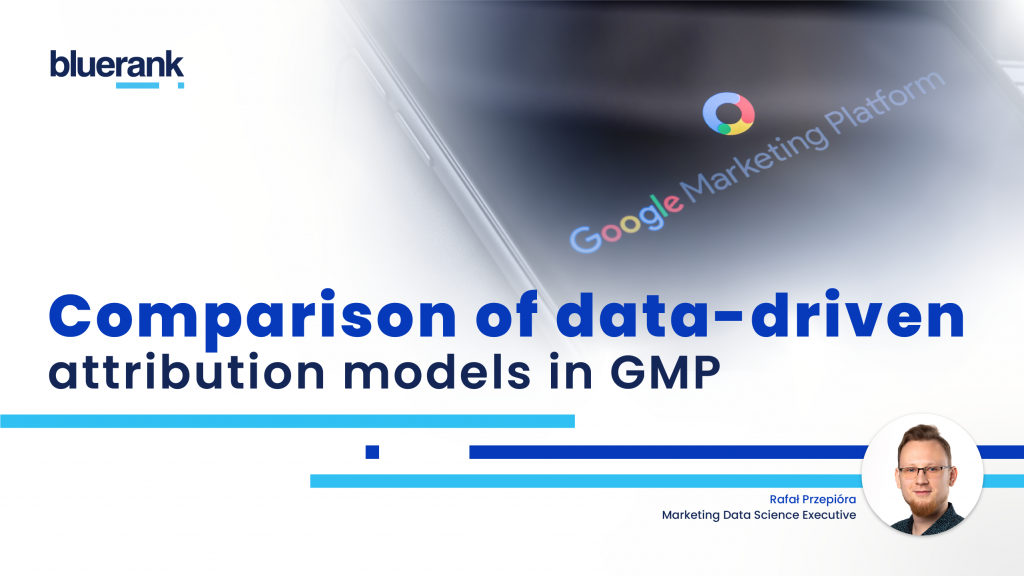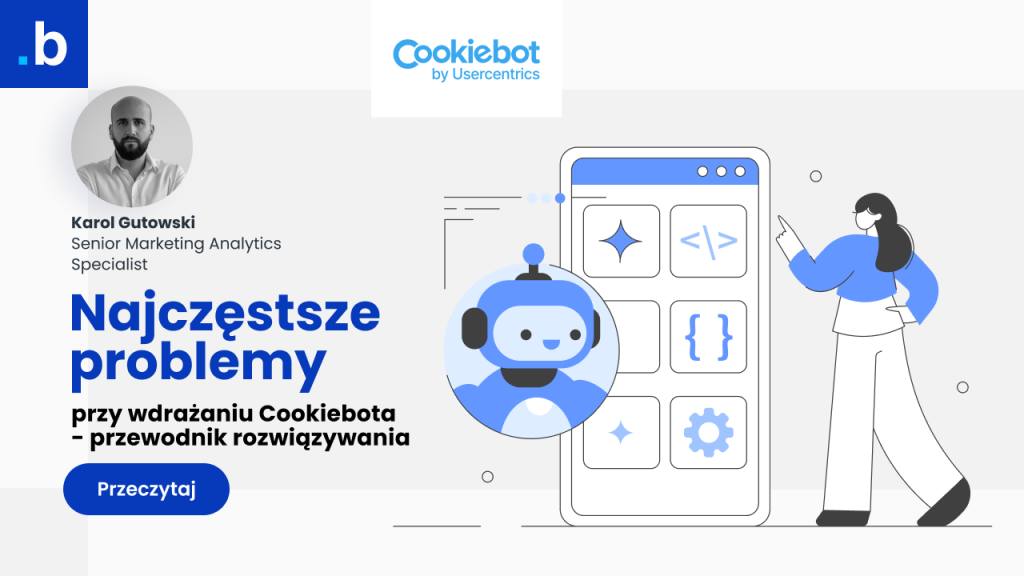As a customer you probably recall situations when you spent many hours before purchase. You are not the only one who doesn’t make your decision on the spot. If you like concrete numbers – Google’s statistics say that 38% of converting paths consist of more than one marketing channel – that means that evaluation of which channels are the most efficient requires broader look and taking the whole path into consideration. Good way to do that is channel attribution – especially the data-driven one. Google Marketing Platform products are offering their own data-driven models. How do they differ? Is there the best solution? In this article we investigate models used in Google Analytics, Campaign Manager, Search Ads, Google Ads and compare them between each other and our original solution in Blueattribution application.
Why attribution? Why data-driven?
But first, why is data-driven attribution the best solution actually? To know that you need to understand what is the aim of attribution and how it is achieved by rules-based models. Certainly you know that sessions aren’t equally valuable and not every user who entered a website will convert. Evaluating campaign performance by a number of impressions, clicks or CTR never shows precisely its impact on goals associated with generating conversions or revenue. However, results presented as distribution of conversions between channels enable objective evaluation of channel efficiency. And consequently whether a budget is spended optimally.
The easiest way to make attribution is to create a heuristic model based on simple rules of credit distribution across channels that occured in the path. On the infographic below you will find a comparison of the most important features of these models and the data-driven one. 
Common advantage of rules-based models is the fact that it is easy to understand the algorithms used to distribute conversion between channels. However, every model has its disadvantages resulting from too cursory research of clients paths. Imagine a quite frequent scenario where a user starts their journey from acquisition channels, then returns to the website thanks to remarketing campaigns and finally, when they decide to convert, they do it after entering the website using a brand channel (for example after typing shop’s name into a search engine). Linear model is the only rules-based model that doesn’t make assumptions about higher significance of particular elements of the user’s path – every step gains equal credit for bringing conversion. Sessions aren’t equally important though, some channels are more effective than others, but linear model don’t take up a challenge to identify those channels. Other heuristic models assume higher significance of channels placed in particular path phases making some channels underrated or overestimated.
So the challenge here is to identify – in the fair way – which channels are the most efficient in encouraging clients to make a conversion. This challenge is taken up by data-driven models. In contrary to rules-based models, they use machine learning algorithms to evaluate the impact of every channel to conversion. These models take into consideration such factors as number of interactions, order of channels in the path, relations between channels and both converting and non-converting paths. In the end, a data-driven model can answer a question of the real added value of a channel when it appears in the user path. Common algorithms used in business are Markov chains model and Shapley value model.
Data-driven model is the best… but in which tool?
In every GMP tool data-driven attribution uses the same logic and is based on the same algorithm – Shapley value. In Blueattribution we have a slightly different approach – our model is based on Markov chains algorithm which performs better when business has many various channels. Another thing, which may be even more important than choosing a data-driven algorithm, is selection of data used to evaluate channels performance. That factor differs between GMP tools.
On the one hand we have Search Ads 360 and Google Ads – tools that are very strong in actionability. Data-driven attribution results can directly improve campaigns, since they can be easily used to bid adjustment. Data-driven model will credit campaigns from every stage of the funnel based on their actual impact, so switching attribution model to data-driven may lead to more accurate ROAS calculation and better performance of the campaigns in the long run. The disadvantage here is the fact that these tools aren’t comprehensive, since they contain only a portion of marketing channels.
On the other hand we have products sharing a more complete story of marketing efforts. Data-driven attribution in Campaign Manager measures effectiveness of paid channels considering all conversion paths, but attributes to maximum 200 touchpoints. Unlike other tools, CM takes an advantage of third-party cookies so can also take impressions into consideration in the attribution model. It may be a huge benefit when you have display campaigns which don’t necessarily drive you clicks, but are important in building brand awareness. However, you have to be aware of inaccuracies caused by elimination of 3rd party cookies in popular browsers.
Campaign Manager shows us only paid channels results. To keep track with all marketing channels, including for example organic and social channels, we can use Google Analytics. First-party cookies enable click-based attribution. Although it is possible to use other data sources (Campaign Manager 360, Google Ads or Display & Video 360) to add impressions, it would introduce a bias to the model, since other channels, such as organic and social, wouldn’t have impression data in the model. Google Analytics offers two data-driven models – Attribution (beta) and attribution in Model Comparison tool for GA360 users only. The main difference between these approaches is the limitation put on data used in attribution models. Model Comparison tool considerates all paths but uses only the last four touchpoints of the path no matter how long ago they occured, whereas Attribution (beta) uses all touchpoints in the lookback window which can be set to at most 30 days.
Investigating boundaries put on both modules we can conclude that businesses which clients need more time to make a converting decision, but don’t interact with website many times, should consider attribution in Model Comparison in GA360. In contrast, businesses which clients convert quickly, can use Attribution (beta) module. It seems that GA doesn’t offer a suitable solution for businesses with customers paths longer than 30 days and consisting of many interactions. To meet this need we recommend data-driven attribution in Blueattribution that is more flexible and can be adjusted to business needs.
Read more:
https://www.fullstackexperts.eu/
https://attribution.bluerank.com/


